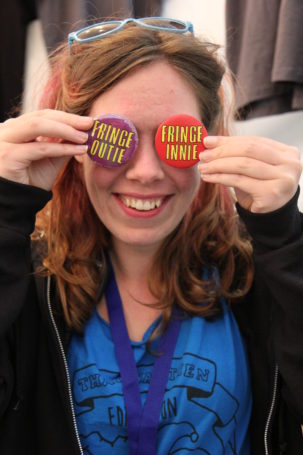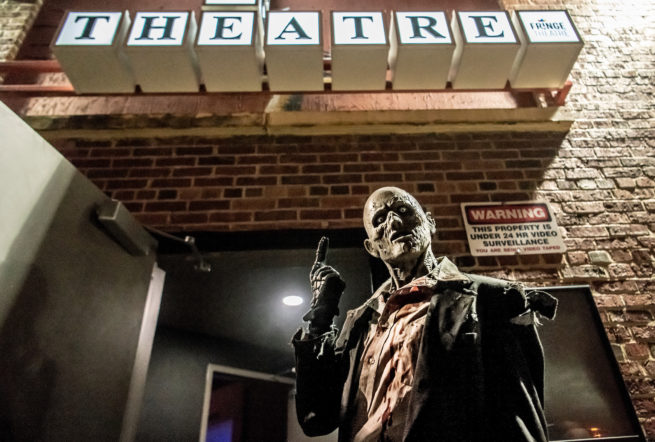August 2, 2021
The Edmonton International Fringe Festival will be scaling back operations this year in order to accommodate changing public health needs and to recover from the cancellation of the 2020 Fringe.
The COVID-19 pandemic was a challenge for all industries, but local theatre artists were hit especially hard by restrictions that largely prevented them from practicing their craft.
Last year’s cancellation of the Edmonton International Fringe Festival represented a three-million-dollar loss in revenue for the organization. This year’s iteration of the classic festival will look different to those who were attending the Fringe pre-pandemic.

Together We Fringe: A Fringe Theatre Event will take place from August 12-22 in a hybrid live and digital format. The Fringe has had to significantly scale down their operations to be able to put the festival forward in a pandemic context.
“We’ve been saying that it will look a lot more like the very first Fringe Theatre event in 1982 than the festival we know and love and left behind in 2019,” says Megan Dart, Interim Executive Director of the Fringe. “We’ve really spaced out our scheduling this year to ensure there’s lots of time in between audiences inside venues. It was really… approaching it from a very different perspective than what we’ve done in the past.”
This year’s festival will consist of 52 indoor shows – a significant reduction in size from 2019’s 256 indoor shows. These shows will be taking place across eight venues, compared to more than 50 venues in 2019.

The transition back to a full pre-pandemic-style Fringe Festival will take a couple of years, according to Murray Utas, Artistic Director of the Fringe.
“It’s going to feel like people aren’t ready just to blow the lid off everything and get back at it. They’re ready to come back together. But let’s find a way to make that heartfelt and responsible, and, you know, the care that we need to do this is at the forefront,” says Utas.
The loss of the 2020 Fringe Festival left 1,600 artists, and 300 summer staff, without most of the income that the festival would have provided them. Some skilled labour has left the industry, according to Dart, and she doesn’t know if or when they’ll return.
“There was sort of this ripple effect of the cancellation of major events, and it’s been really hard. You know, our building has sat empty for the better part of those 15 months,” she says.

While COVID-19 presented a significant challenge to the Fringe, it’s in the spirit of the festival to find a silver lining. By going completely digital in 2020, the Edmonton Fringe Festival attracted viewers from 61 countries.
“We learned that it’s an incredibly important tool for reasons of accessibility…I think the impact is not lost and I’m excited to see what that means for us as an organization going forward,” Dart explains.
The opportunity to build on accessibility during the pandemic is seen as an important opportunity by festival organizers. “Everyone Fringes in their own way… to be able to return to that, even just a little bit this year, is a gift.”
Listen to our podcast episode on this year’s Fringe